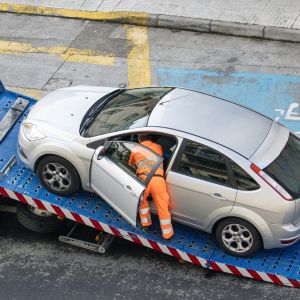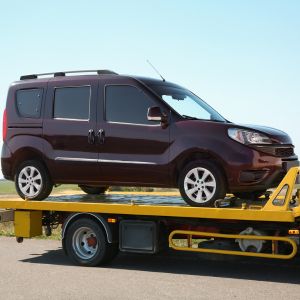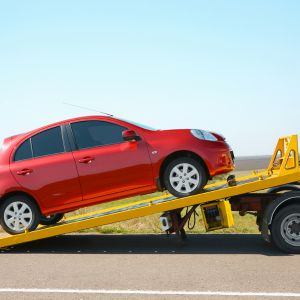Tow a car with manual transmission differs from towing an automatic transmission car. This is because manual transmissions are more sensitive to the stress caused by towing, and if not done correctly, it can cause damage to the transmission or other vehicle components.
When towing a manual transmission car, it is critical to follow some best practices to ensure the safety of both the towing vehicle and the vehicle being towed. These best practices include using the parking brake, shifting into neutral, using the proper towing equipment, securing the wheels, maintaining a low speed, avoiding sudden stops and starts, and adhering to your state’s towing laws.
What is manual transmission?

A manual transmission (also known as a manual gearbox or a standard transmission) is a type of vehicle transmission that allows the driver to manually control the gear ratios. A clutch is used to engage and disengage the engine from the transmission in a manual transmission, and a gear lever is used to select the appropriate gear for the driving conditions.
Some drivers prefer manual transmissions because they are more fuel efficient than automatic transmissions. They also give the driver more control over the vehicle because he or she can choose when to shift gears. Manual transmissions, on the other hand, necessitate more skill and attention from the driver, who must coordinate the use of the clutch and gear lever while driving.
Process of Tow a Car with Manual Transmission

- To prevent the vehicle from rolling while being towed, make sure the parking brake is engaged before towing.
- To avoid damaging the gears while towing the vehicle, put the transmission in neutral.
- Use a tow bar and a towing hitch that are appropriate for the weight of the vehicle being towed.
- To prevent movement, use wheel chocks to secure the front wheels if you are towing the car on its wheels.
- When towing, it is critical to maintain a low speed because high speeds can put undue strain on the drive train and transmission.
- Because abrupt stops and starts can put additional strain on the drive train and transmission, they should be avoided when towing a manual transmission car.
- Because each state has different towing laws, it’s a good idea to check the laws in your state before towing.
Advantages of manual transmission:

- Manual transmission is much cheaper than the automatic transmissions. Its initial and maintenance cost are lower than the automatic transmissions.
- With manual transmission the driver has more control over the vehicle and he can shift gears to drive properly.
- The maintenance charge of the manual transmission is quite low and hence preferred by the drivers
- The manual transmission is available even in the modern vehicles thus making it more convenient than the automatic transmission.
Disadvantages of manual transmission:
- Manual transmission requires special driving skills and not everyone is well trained for such driving skills the drivers can lose the control over the vehicle and can make it difficult to drive smoothly.
- Drivers can get tired while driving because it requires more force And unlike automatic transmission it demands the use of hands and legs a lot which can cause fatigue to the driver
- Manual transmission becomes more difficult when the vehicle has to drive through the traffic. Because the vehicle has to be stopped and start quite frequently which will be difficult with excess burden on the vehicle.
- The vehicles with manual transmission have lower resale value in comparison to the vehicle with automatic transmission equipments.
Conclusion
Manual transmissions can be useful for towing, but it depends on the vehicle and the towing conditions. Manual transmissions, in general, provide more control over the vehicle and can be more efficient under certain conditions. They do, however, require the driver to manually shift gears, which can be more physically demanding and require more attention while towing.
When considering towing with a manual transmission vehicle, consider factors such as the weight of the load, the terrain, and the engine power. It’s also a good idea to choose a vehicle with a low-range gear, which can help you control the vehicle’s speed and provide more torque for towing.
Frequently Asked Questions
Q1. Is manual transmission good for towing?
Ans. Yes, manual transmission good for towing as long as the driver have a control over the clutch and gear and possess the skills to handle the trailer.
Q2. How do you protect your transmission when towing?
Ans. To protect your transmission when towing, you can follow these steps:
- Use the right gear: Use a low gear for steep inclines and a higher gear for descending. This can help maintain a steady speed and reduce stress on the transmission.
- Avoid overloading: Do not exceed the maximum towing capacity of your vehicle. Overloading can put extra stress on the transmission and cause damage.
- Use a transmission cooler: Installing a transmission cooler can help regulate the temperature of the transmission fluid, reducing the risk of overheating and damage.
Q3. Which is best for towing manual or automatic?
Ans. For some drivers, automatic transmissions are more convenient and easier to use, whereas manual transmissions provide more control and efficiency in certain conditions. When considering towing, consider the weight of the load, the terrain, and the engine power, and consult with a mechanic or towing expert for recommendations on the best transmission for your needs.
Q4. What gears to use when towing?
Ans. When towing, it’s best to use the proper gear to help maintain a steady speed and reduce transmission stress. Here’s a general guideline for selecting gear:
- Use a low gear (1st or 2nd) to provide more power and control the vehicle’s speed.
- Use a higher gear (3rd or 4th) for downhill inclines to help control the speed and reduce transmission stress.
- On level ground, use a gear that maintains a constant speed and eliminates the need for frequent shifting.
Q5. Will towing damage my gearbox?
Ans. Towing can put additional strain on the gearbox and potentially damage it. Towing your vehicle properly and following best practices, on the other hand, can help reduce the risk of damage.
You can protect your gearbox and reduce the risk of damage by following guidelines such as using the proper gear, avoiding overloading, using a transmission cooler, avoiding sudden stops, and maintaining proper fluid levels.

